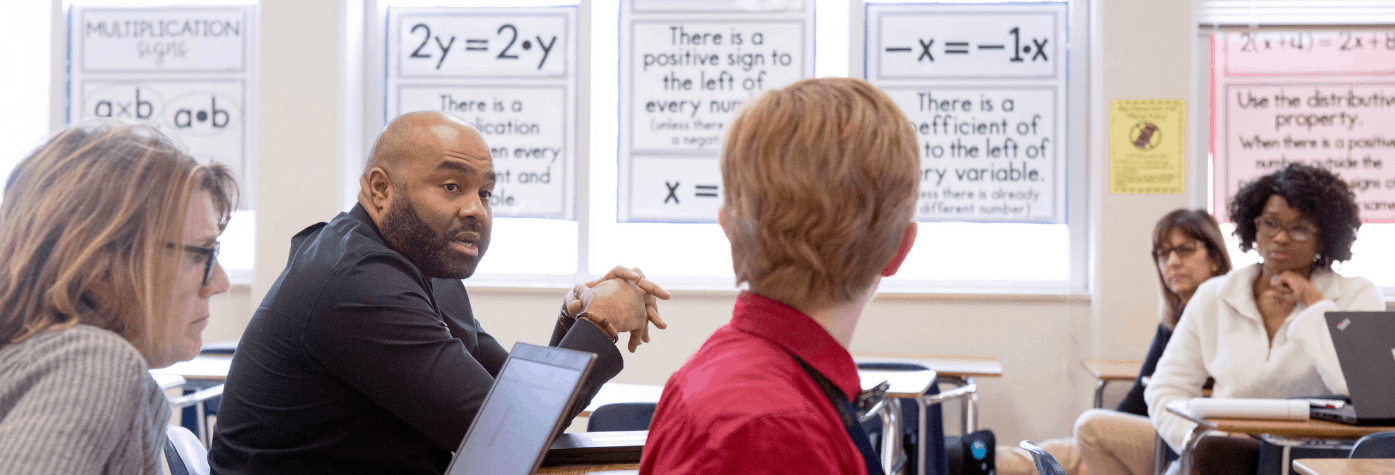
Equitable Instructional Practices
In contrast to the Anti-Racist Curriculum and Standards strand which examines educators’ materials, standards, and plans, the Equitable Instructional Practices strand zooms in on daily instruction as it happens live in the classroom. Ultimately, equitable instruction fosters an interdependent community where all students contribute and learn successfully.
What this Strand Covers
The Equitable Instructional Practices strand describes how teaching and learning happen live in the classroom, with a focus on the interplay between students, teachers, and the content of the lesson. Students are at the center of equitable classrooms; they are the ones doing the majority of the thinking, talking, reading, writing, and creating. Our role as teachers is not just to deliver content, but rather to be coaches for students, working side-by-side to celebrate and challenge them as they learn and grow.
Beliefs and success
Guiding Questions:
- What opportunities exist to further center students’ thinking and ideas in my lessons?
- Who is talking? Who is silent? What is the ratio of teacher talk and student talk in our classroom? What trends exist in participation and how do they reinforce or disrupt patterns of marginalization and racism?
- How well do I understand the progression of standards and content that form the foundation of my instruction? What opportunities exist to deepen this content knowledge in order to support students’ learning?
- How do I decide when I step in and step back to support students’ thinking? How do I determine when struggling is productive rather than unproductive?
There are many ways to make these resources fit your needs (and probably plenty more ideas you could add!). Here are some suggested ways to think about your entry point.
To think holistically about how to provide all students multiple ways to access to knowledge and make meaning.
To coach or assist classroom educators in developing intellectually demanding and affirming instructional practices.
To define a vision for strong and support instructional practice across classrooms.
To understand the connection between daily instruction and the opportunities all students need to be prepared for their next step.
Even with good intentions, there is the potential to cause harm. Our full framework identifies common risks to avoid in your planning. Here are a few examples:
Failing to provide students access to grade-level content and instruction denies them critical opportunities to do higher-order thinking.
- There is a careful balance to strike between meeting individual needs and maintaining rigor. Watch out for over-scaffolding as well as the absence of tailored supports.
- There can be a tendency to “help” students with cognitive work or fill silences. Doing so actually centers the teacher’s thinking and comfort.
- Using pedagogy that reinforces white supremacy culture, racism, sexism, ableism, etc. can make some students feel that school isn’t “for them.”
Take Action
Ready to make changes in your practice? Head over to our action center!
Over the next year, we’ll be listening and learning with the goal of lifting up stories that make this vision more actionable. Using these practices in your context will help educators across the country learn more of what works for equity.

Stay in the know
Get timely insights direct to your inbox. Sign up for the latest news, tips, and opportunities from Leading Educators.


